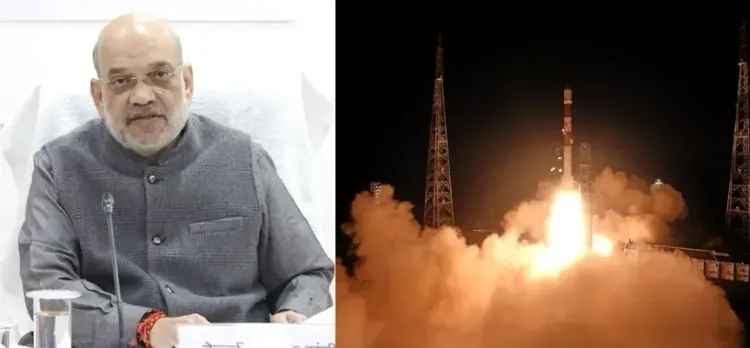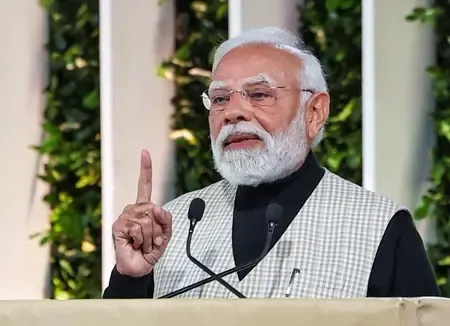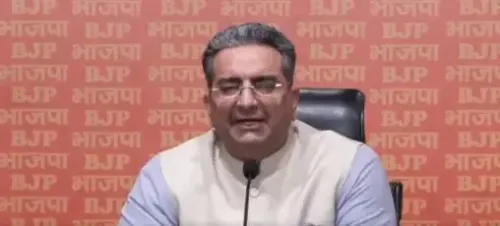Amit Shah Praises SpaDeX Mission Success, Boosting India's Global Space Leadership

New Delhi, Dec 31 (NationPress) Union Home Minister Amit Shah expressed his admiration for the Indian Space Research Organisation (ISRO) following the triumphant launch of the Space Docking Experiment (SpaDeX) mission on Tuesday.
The mission, which took off on Monday at 10 p.m., was carried by the PSLV C60 rocket, transporting two small satellites, SDX01 (Chaser) and SDX02 (Target), along with 24 additional payloads. The launch occurred from the first launch pad of the Satish Dhawan Space Centre situated in Sriharikota. Approximately 15 minutes post-liftoff, both spacecraft, each weighing around 220 kg, successfully entered a 475-km circular orbit.
In his remarks, the Home Minister hailed this accomplishment as a significant victory that paves the way for advancements in the nation's space docking technology.
He shared on X, "Bharat is now on its way to becoming the fourth nation to achieve mastery in space docking. Congratulations to Team @isro on the successful launch of the #SpaDeX Mission. This milestone not only marks a grand success but also enhances Bharat's standing as a leading global force in space. Wishing our brilliant minds all the best for their forthcoming endeavors."
With this achievement, India joins the ranks of the US, Russia, and China as the fourth nation to master docking technology.
Union Minister Jitendra Singh also noted on X, "India has now joined the elite group of nations capable of space docking, utilizing its indigenously developed Bharatiya Docking System."
This technology is expected to facilitate missions beyond Earth, including Gaganyaan and the Bharatiya Antriksha Station, Singh added.
SpaDeX aims to establish India's capabilities in orbital docking, a crucial technology for future human spaceflights and satellite servicing missions, as stated by ISRO. The PSLV successfully lifted off with two small spacecraft: SDX01, the chaser, and SDX02, the target, both around 220 kg in weight.
The satellites successfully merged in a low-Earth circular orbit, and ISRO will monitor the docking orientation for four days to assess the software processes. The Bharatiya Docking System is equipped with a docking mechanism, a suite of four rendezvous and docking sensors, power transfer technology, an indigenous autonomous rendezvous and docking strategy, and an inter-satellite communication link (ISL) that enables autonomous communication between spacecraft, all designed with built-in intelligence to track the states of the other spacecraft.
By mastering this space docking technology, India not only solidifies its position among elite spacefaring nations but also lays the groundwork for its upcoming space missions, including lunar expeditions like Chandrayaan-4 and establishing the Indian space station, independent of Earth’s GNSS.
According to ISRO, the mission will also illustrate the transfer of electric power between the docked spacecraft, a vital requirement for future applications like in-space robotics, composite spacecraft control, and payload operations following undocking. SpaDeX will also employ PSLV's fourth stage, POEM-4, for various experiments, which carries 24 payloads from academic institutions and startups.










